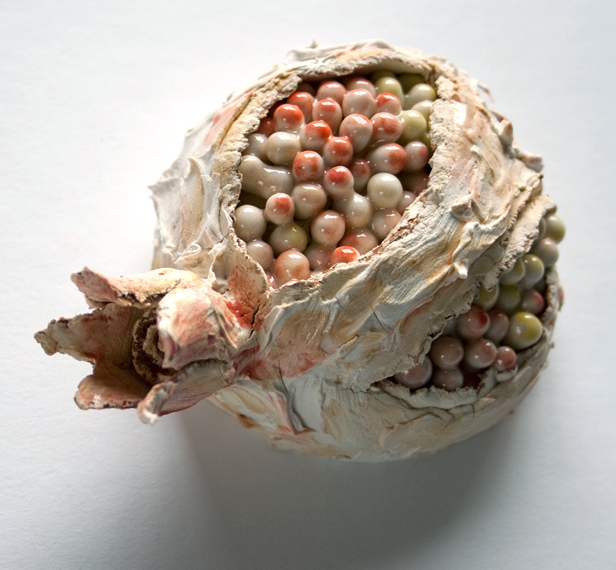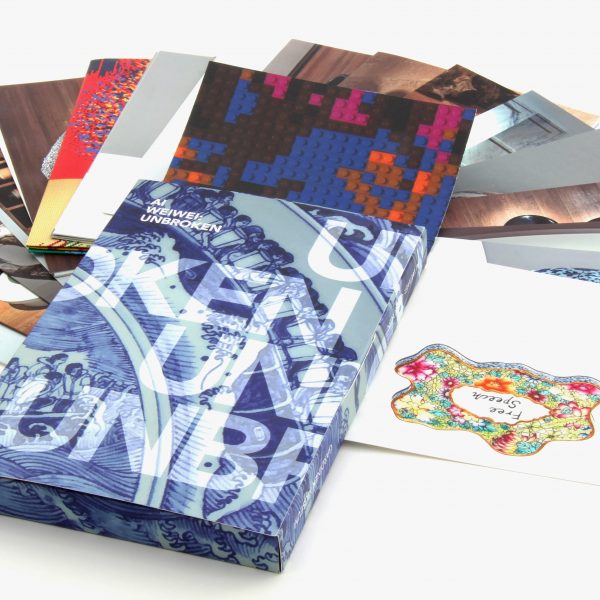|
writings

Un(Earthings): The Artist as Occult Technician
NCECA Journal Vol. 41 (2021): 58-61.
"Ceramics is a medium of dualities. Its use in art invokes a kind of archeological imaginary—the weight of its history inextricably linked with the nascence and growth of human civilization—while in other fields it continues to be developed into new and futuristic applications. Ceramics is also a medium of transformation, easily lending itself not just to chemistry, but to alchemy, and not just to history, but to storytelling."

The Sound of a Hard Knock against Porcelain
Ai Weiwei: Unbroken. Toronto: Gardiner Museum, 2019. Exhibition Folio. "An icebreaker on Lake Ontario chugs through the thick winter ice, revealing patterns of blue and white. Shards with sharp edges break apart in the churning water."
Developing Ideas Through Making: A Workshop with Anton Reijnders Studio: Craft and Design in Canada (Spring/Summer 2018): Clay in its raw state is often overlooked by ceramicists, even those of us who enjoy the making process...
Whale Fall Poetic Response to Whale Fall, a collaborative exhibition with Nicholas Crombach. Published in Whale Fall: Nicholas Crombach & Nurielle Stern. Waterloo: Canadian Clay & Glass Gallery, 2019. Exhibition Catalogue.
Whale Fall Strange bodies meet where taxidermists stitch by tall tales and lamplight. Flesh erupts in putrid neon, and bones float softly in their sockets. Filtering anodyne dreams, you sleep wrapped in sweat-damp sheets yellowed and rippling. A wake attended by the hungry. And I'm standing here, sucking in iodine tears for a fallen whale.
Excerpt from Master of Fine Arts Thesis: Stale Rainbows (on a Wednesday)
Ceramic creatures
Beginning (beginning)
Before language existed as we know it, the earliest humans shaped their world with whatever materials came to hand; carving, shaping, and moulding a place for themselves—a hollow in which to fit. We still do that today, drawing large strokes across the landscape. Highways and cities, industry and farmland, seen from satellites, in miniature, as an imprint scrawled into the earth. Gaston Bachelard writes in his volume The Poetics of Space, “We cover the universe with drawings we have lived.”[2]
Before there was written language, there were the craftsmen recording history in carefully detailed vessels and ceremonial objects. The craftsmen embellished their creations with carvings or images to tell stories of their traditions, to commemorate events, and to strengthen the memory of a culture based in orality. The narrative capacity of an object is therefore not cemented in its role as a prop in a stage-play, or in its history made visible with signs of wear, but in its origins in the hands of the craftspeople throughout history. We tell stories to make sense of the vastness of the world, to interrelate (you and I) and to carve, shape and mould a place for ourselves to fit. And we embellish these stories. We add ornament, we decorate: a whiff of the fantastical, the imaginary, a tall-tale, an untruth. We add mystery through ambiguity, open endings, and layered meaning. Language is built on metaphor. Without metaphor, we could not describe what is and what we are, for we are rooted in the concrete, in the solid, physical, and tactile universe.
Metaphors render the abstract sensible and sensory and give us something to hold onto, to grasp firmly in our understanding. They make language malleable so we can shape it as we have shaped the world. What we can grasp through metaphor versus what we cannot comprehend; that is the dialectic between inside and outside, between the tamed and the wilderness. The borderlands of understanding that lie between us and out there—that is what I seek to explore in my work. That and the formability of our world through language and material and the particular language of materials. And, finally, the narrative capacity of objects themselves.
* * *
As makers we already know the heady, intoxicating potentiality of clay to become whatever we dream of and desire.
[1] Nurielle Stern. Eyes of Metal and Agate, Gardiner Museum, November 2013, Toronto.
[2] Gaston Bachelard, The Poetics of Space: The Classic Look at How We Experience Intimate Places, trans. Maria Jolas (Boston: Beacon Press, 1994), 12.
|